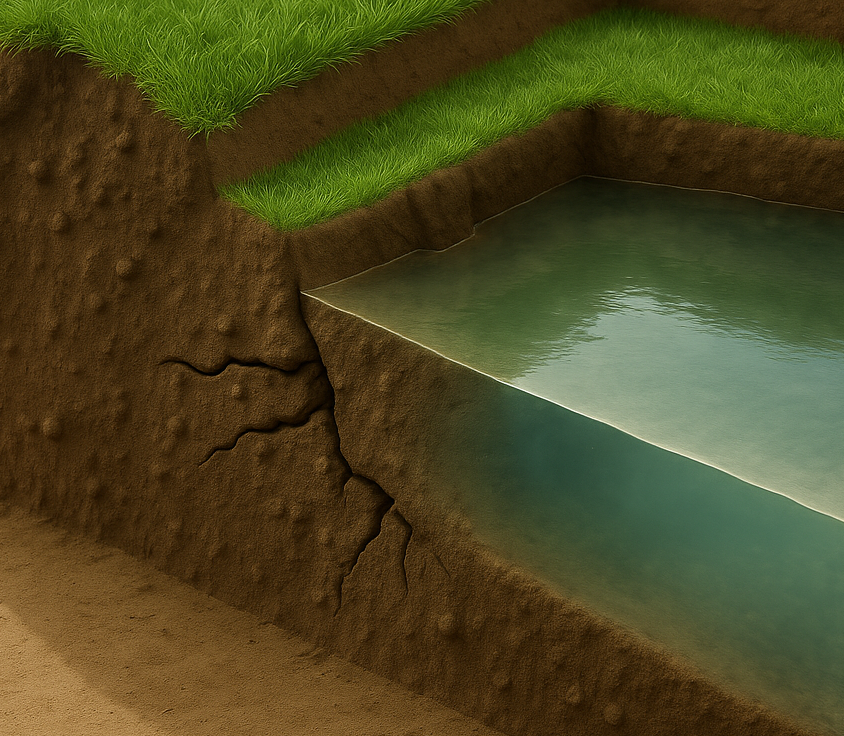
Water loss in your dam can be frustrating, especially when it’s not immediately clear where the problem lies. Understanding the common signs of a leaking dam & knowing how to respond is the first step toward preserving your water supply & preventing costly losses.
Here are the top five signs your dam may be leaking & what you can do about it.
1. Rapid Drop in Water Levels Without Rainfall or Use
If your dam’s water level drops significantly without heavy usage or evaporation, it’s a strong sign of leakage. While some natural seepage is expected, a noticeable drop over a short period could indicate leaks in the base or walls of the dam.
Solution:
Use Water$ave Plug for fast leaks & Water$ave Seep for slow, continuous seepage. Both products are designed for surface application — no draining or machinery required.
2. Wet Areas or Patches Below the Wall or Toe of the Dam
Moist or boggy patches downstream of your dam wall often indicate water is escaping through cracks or porous soils. These spots can become worse over time if not addressed early.
What to do:
Conduct a walk-around inspection after dry weather. If water continues to pool or run, treat with Water$ave Seep, which is ideal for leaks in fine soils, walls & slopes.
3. Cracks or Slumping in the Dam Wall
Structural damage such as cracking, slumping or small sinkholes can allow water to escape or undermine dam stability. These issues may also worsen with fluctuating water levels.
Tip:
Address these quickly by applying Water$ave products on the surface of the dam before structural repair is needed. Water$ave Plug is suitable for coarse soils & larger fissures.
4. Sudden Changes in Vegetation Around the Dam
Unusual plant growth, greener patches, or weed clusters in areas where vegetation previously struggled may signal water is leaking underground, encouraging unexpected plant growth.
Recommended action:
Inspect for seepage paths & monitor plant activity after rainfall or water use. A dam assessment may help you determine the correct treatment zone.
5. Cloudy or Discoloured Water from Inflow Points
If water entering your dam from inlets or natural runoff suddenly becomes turbid or discoloured, it may be eroding a leak path. This erosion can worsen the leak and reduce dam lifespan.
What to do next:
Apply Water$ave products across the surface of your dam to intercept and block leaks. For added protection, conduct a basic soil test or contact us for a free dam assessment.
Choosing the Right Water$ave Product
- Water$ave Plug - Best for large, fast leaks and coarse soil conditions (such as gravel or sandy bottoms).
- Water$ave Seep - Ideal for fine soils and slow leaks from dam walls or minor seepage zones.
Both products are:
- Safe & non-toxic
- Easy to apply directly to the water surface
- Work without draining the dam
- Available in 12kg &18kg pails
Need Help? Let Our Dam Experts Assist You
If you’re not sure what type of leak you have or which product to use, we’re here to help:
- Call our team for personalised advice
- Submit your dam details online for a free quote
- Visit our Solutions page for full product comparisons
Stop losing water — start sealing your dam today with Water$ave Dam Sealers.



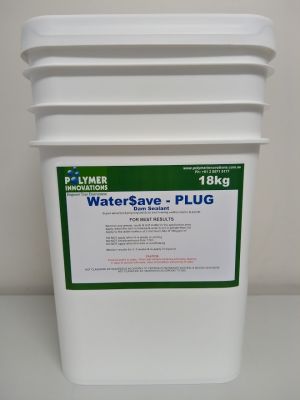
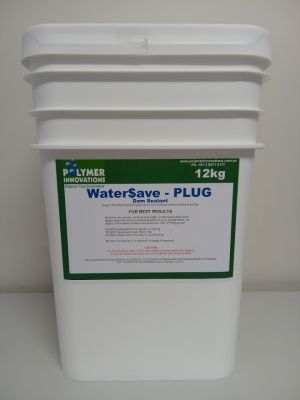
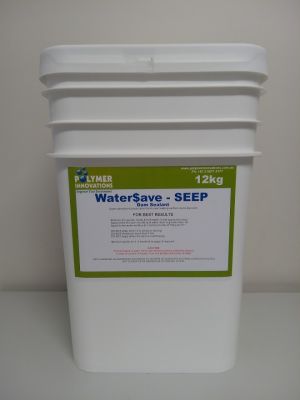
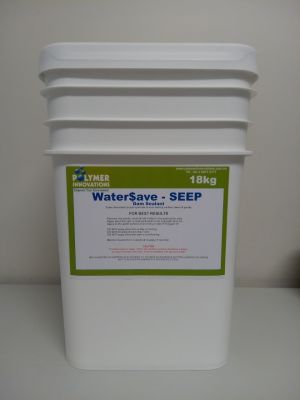
Comments